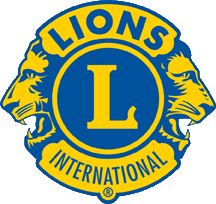I just finished a great non-fictional novel about the Chicago World's Fair (aka, the White City) called, The Devil in the White City: Murder, Magic, and Madness at the Fair that Changed America by Erik Larson. Among the many fantastic details that I learned about in this book, one jumped out at me that I felt Lions in particular would find interesting. I will share that brief passage in a moment, but first a little background information.
In 1892, a superintendent of the Illinois School for the Blind named Frank Haven Hall developed the first modern printing machine for the blind when he demonstrated his recently developed braille typewriter before the American Association of Instructors of the Blind. A good writer with a slate and stylus could maybe write ten to twenty words a minute, whereas a proficient braille typewriter operator could write forty to sixty words per minute. Because of Hall's invention, Louis Braille's devised dot system started to become more widely accepted.
But Hall did not stop there. He wanted to make a more powerful, quicker way to print braille; a machine that could emboss whole sheets of thick paper. He succeeded, and his newest invention was exhibited at the Columbian Exposition in Chicago (aka, Chicago World's Fair) in 1893.
Now that you know the background, I will give you the passage from Larson's novel:
Chance Encounters led to magic.
Frank Haven Hall, superintendent of the Illinois Institution for the Education of the Blind,
unveiled a new device that made plates for printing books in Braille, the Hall Braille Writer, which
he never patented because he felt profit should not sully the cause of serving the blind. As he
stood by his newest machine, a blind girl and her escort approached him. Upon learning that Hall
was the man who had invented the typewriter, she used so often, the girl put her arms around his
neck and gave him a huge hug and kiss.
Forever afterward, whenever Hall told this story of how he met Helen Keller, tears would fill
his eyes (Larson 2003, p.285).
Until reading this book, I had not given any thought to the invention of braille or how it became widely accepted by the blind community. It is refreshing to read a wonderful and touching passage such as this, and to know that Hall did this as a SERVICE to the blind is even more remarkable. He certainly made a difference in the lives of the blind, which is evident by Helen Keller's reaction upon seeing one of her original Knights. Hall's impact on the greatly improved quality of life for the blind is still evident today as most books are printed using updated versions of the Braille Writer he exhibited at the Chicago World's Fair.
I learned this information from reading articles on the American Printing House for the Blind's website at www.aph.org/ and Erik Larson's novel, The Devil in the White City.
Saturday, March 13, 2010
A Chance Encounter in the White City
Subscribe to:
Post Comments (Atom)

No comments:
Post a Comment